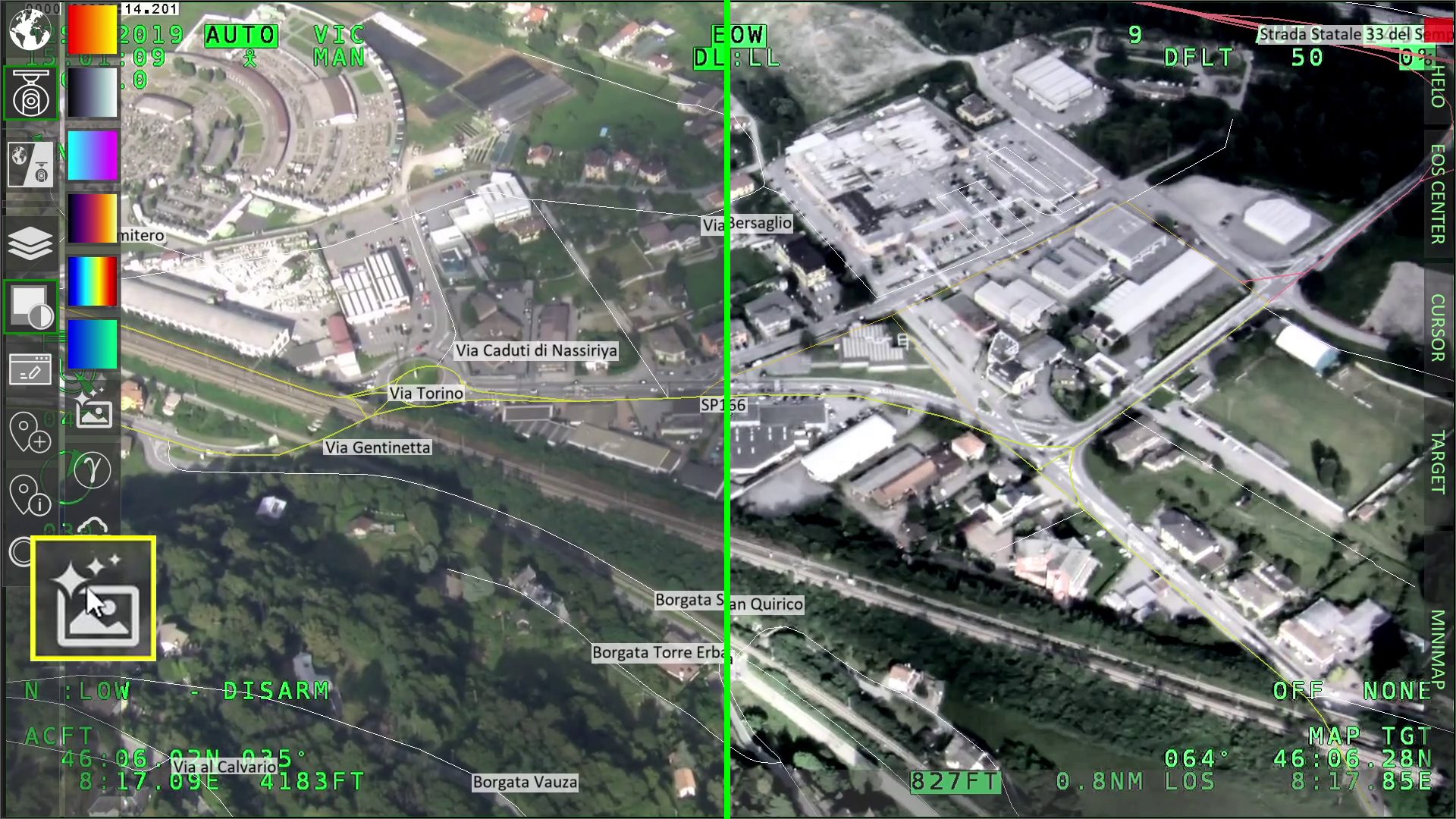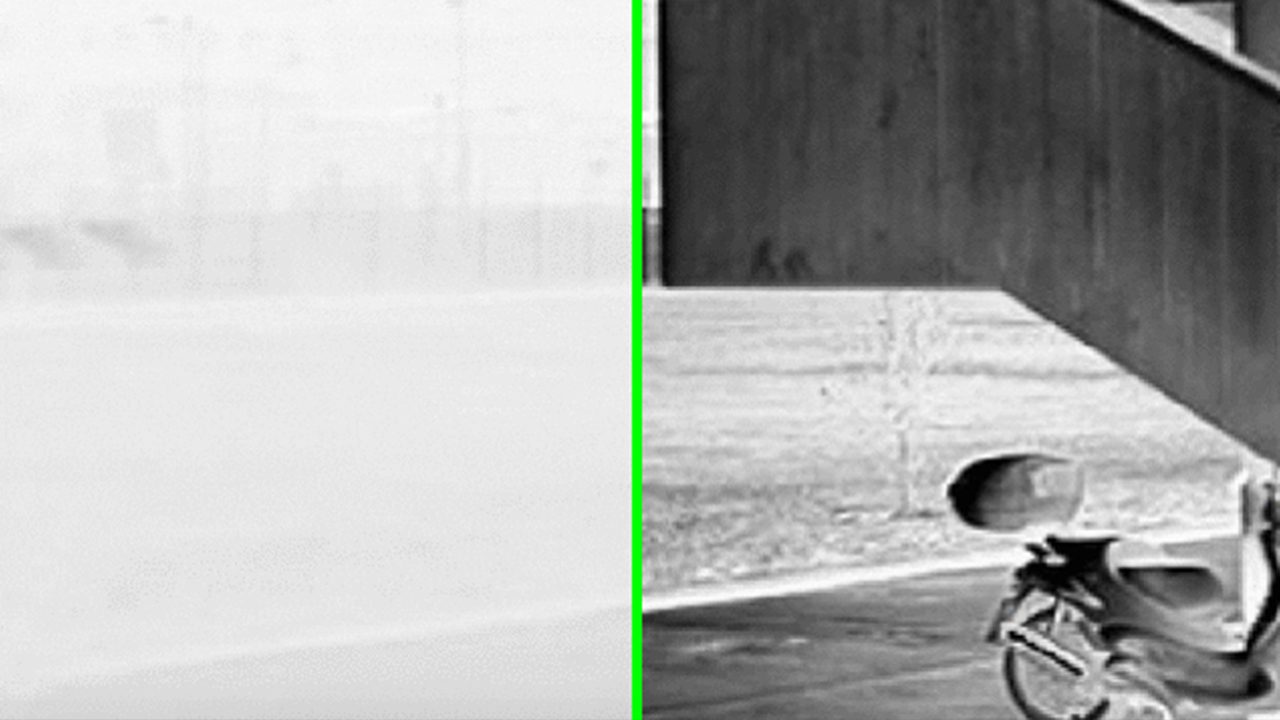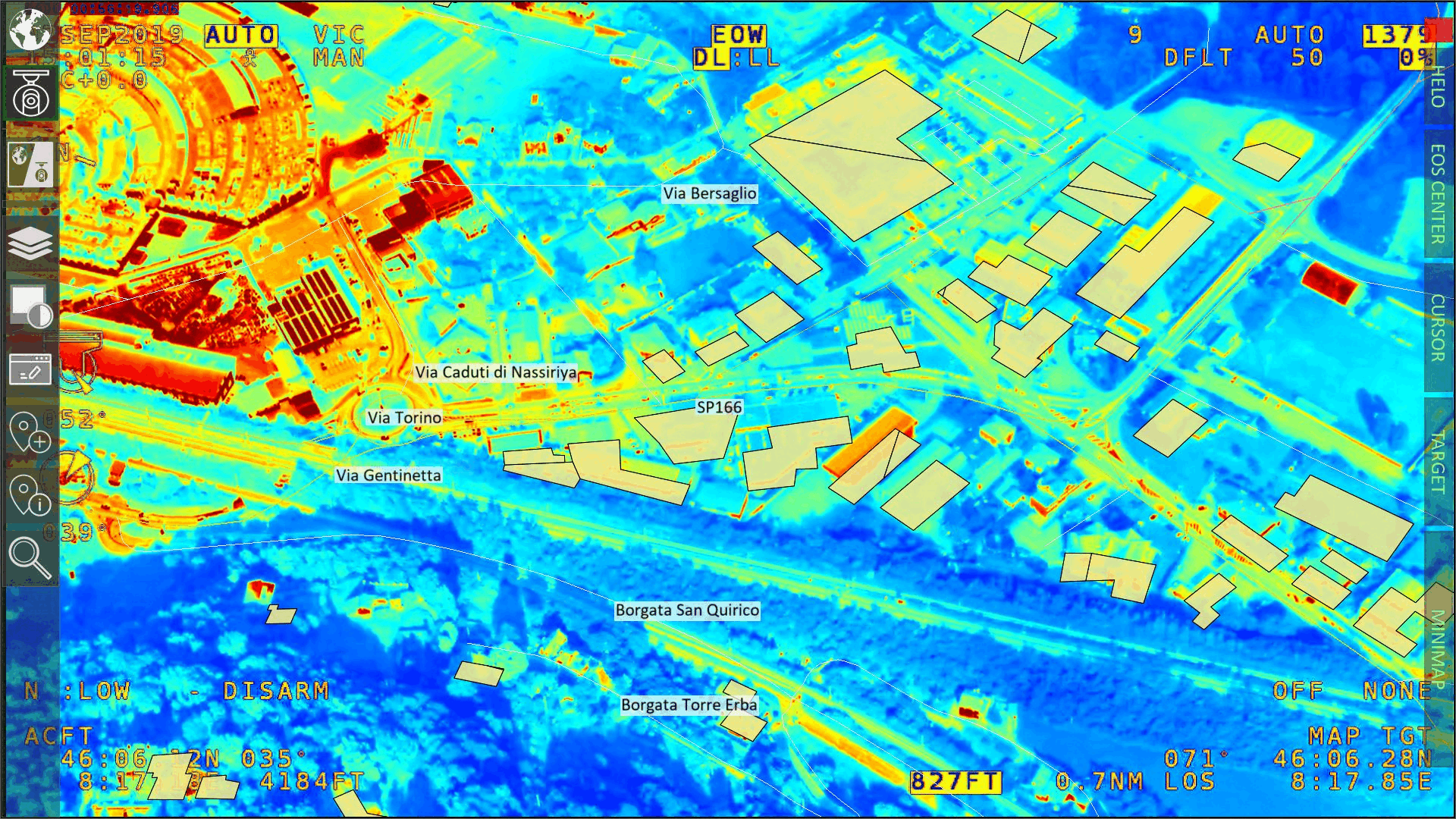Fog Suppression
Fog Suppression is specifically developed to enhance visibility in foggy conditions. This technology significantly improves the clarity of images and video feeds in low-visibility environments, providing operators with crucial visual information that would otherwise be obscured.
How Does It Work?
Fog Suppression operates by employing sophisticated algorithms to analyze and process incoming visual data. The system identifies areas of the image affected by fog or haze and applies targeted enhancements to increase contrast and clarity. It does this by estimating the amount of light scattered by atmospheric particles and then removing this scattering effect from the image. The result is a clearer, more detailed view that reveals features and objects previously hidden by fog. This process occurs in real-time, allowing for continuous improvement of visual feeds without introducing significant latency.

Importance in Avionics
- Enhanced Safety
By improving visibility in foggy conditions, airborne operators can navigate with greater confidence and accuracy, reducing the risk of mistake.
- Improved Situational Awareness
Clearer visuals allow operators to better assess their surroundings, including terrain features and potential obstacles.
- Extended Operational Capabilities
Missions that might otherwise be delayed or cancelled due to fog can potentially proceed with the aid of this technology.
- Reduced Operator Fatigue
By providing clearer visuals, the cognitive during challenging weather conditions is reduced.
Applications in OPENSIGHT
The Fog Suppression feature in OPENSIGHT provides operators with:
- Improved visibility in challenging weather conditions
- Enhanced ability to detect and identify objects in foggy environments
- Increased operational effectiveness during low-visibility missions
- Better decision-making capabilities based on clearer visual information
- Reduced risk in fog-prone areas or during foggy weather operations
- More efficient use of visual sensors in varying atmospheric conditions
Performance – standard configuration
- 25 frames per second in QVGA resolution
- 20% range visibility enhancement

It can be utilized independently or in conjunction with other media processing, storage, and exploitation systems, offering flexibility and enhanced functionality across various operational scenarios.
Key Image and Video Enhancement Tools

Super Resolution
Super Resolution is designed to enhance the resolution of target images by exploiting information from multiple frames in a video sequence.

Histogram equalization
Histogram equalization is a technique used to adjust contrast levels and expand the intensity range in a digital image.

Infrared Enhancing
Infrared Enhancing significantly improves the visibility and interpretation of infrared imagery, providing operators with crucial visual information in challenging environments.

Augmented Reality (AR)
Augmented reality (AR) integrates real-time data with 3D visualizations to provide users with an enhanced understanding of their operational landscape.

False Color
False color is a powerful feature that enhances the visibility of crucial details while preserving the specificity of sensor information.
Want to know more about OPENSIGHT?
Designed and developed to meet specific needs in any scenario, OPENSIGHT is a multi-platform PED (Processing, Exploitation and Dissemination) system created to provide the best support in decision making.
Contact us, our team is here to help!
